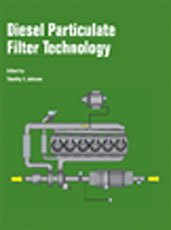Technical Paper
Characterization and Quantification of In-Service Windshield Fracture Mechanisms and Evaluation of Laminate Sharp Impact Resistance as a Function of Construction
2020-04-14
2020-01-0607
Examination of field-fractured windshields was conducted for purposes of determining the principle fracture mechanisms experienced in-use. Samples for the study were gathered both in the United States (New York) and in Europe (France) to explore whether the primary causes of failure were similar for the different geographic regions. In total, over two hundred individual field-fractures were obtained and examined for the study. Detailed fracture analysis of the parts was performed, and multiple fracture mechanisms were identified and quantified. It was found that the two most frequently observed failure modes were common for both regions with the most frequent cause (~70%) of fractures being due to sharp contact of the exterior ply, while Hertzian cone cracking of the outer ply was the second leading cause (~20%). Several other modes were also identified. Given that sharp impact fracture was the dominant observed failure mode, a high-speed, sharp impact test method was developed.

